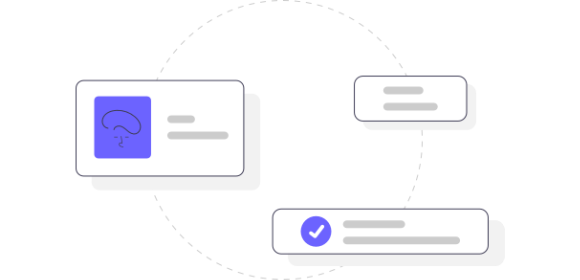How to Choose the Best Audio File Format

How to choose the best audio file format for your project
Whether you're capturing audio for an interview, a podcast, a business meeting, or even a music track, the audio file format you choose for your recording can make a big difference in sound quality.
That's because different formats handle audio in different ways, which affects how the sound reaches your ears. The right audio format for you depends on what you're recording, how you plan to share it, and the level of sound quality you're after.
In this guide we'll walk you through the most common audio file formats, their pros and cons, and when to use each one.
Jump to:
Audio file formats explained
Let's start by looking at the audio formats supported by Transcribe:
MP3
MP3 is one of the most common and popular audio file formats (remember MP3 players?). It compresses audio and offers small file sizes, which makes it a popular choice for streaming online and storing files on mobile phones.
It's a lossy format, which means that some of the sound quality will be lost. But since most of the sound it drops is beyond the hearing range of the average person, you won't usually notice the difference.
Pros
-
Compresses the file into a smaller size
-
Uses less storage space
-
Easy to share online
-
MP3 is widely supported
Cons
- Audio quality might not be as good as other formats
Where it's used
MP3 is widely used to store audio files on computers and mobile devices, including:
-
Music
-
Audiobooks
-
Podcasts
-
Lectures
WAV
WAV (or Waveform) files are lossless, uncompressed audio files which retain all the original sound. This is an ideal file format if the audio is going to be played through high-quality speakers or headphones.
If not, then the quality might not be noticeable, and you'll be left working with large files that are difficult to share online.
Pros
- Great sound quality
Cons
-
Huge file sizes
-
Hard to share online or via email
Where it's used
-
By sound engineers
-
For encoding audio on CDs
M4A
M4A is an audio format that correlates with MP4 video files. M4A files feature either lossless (like WAV) or lossy compression (like MP3). Either way, they retain exceptional audio quality, but the file size is nice and small. M4A is the default file format on Apple devices, first used on iTunes.
Pros
-
Small file size
-
Original quality
Cons
- Poor compatibility with non-Apple devices
Where it's used
M4A is used on Apple devices to store audio files including:
-
Music
-
Podcasts
-
Audiobooks
-
Voice recordings
It is also the format that Zoom recordings are saved in.
These are the audio file formats supported by Transcribe, but let's take a look at some other audio file formats you might come across:
AAC
AAC (which stands for Advanced Audio Coding) files are lossy (like MP3), however they are higher in quality than other compressed audio file types. M4A is a type of AAC, so AAC is used by Apple, and by YouTube too.
Pros
-
Small file size
-
Good sound quality
Cons
- Not as widely compatible as MP3
Where it's used
-
Apple
-
YouTube
OGG
OGG (full name Ogg Vorbis) is a lossy format, so an alternative to MP3 and AAC. The compression does result in some data loss, but for most listeners there's no noticeable drop in sound quality. It's used by Spotify and it's great for streaming, however MP3 and AAC are more widely used due to broader compatibility.
Pros
-
Good sound quality retained
-
Small file size
-
Great for streaming
Cons
- Not as widely supported as MP3
What it's used for
- Spotify
FLAC
FLAC is a lossless audio format, but it features an efficient compression algorithm which can reduce file size by 50-70%. Because of its ability to store high-resolution audio files without taking up loads of storage space, it's popular among audiophiles for storing collections of music.
Pros
-
Original audio quality
-
Smaller file size than other lossless formats
-
Widely compatible
Cons
-
Still larger than MP3 files
-
Harder to share than MP3
-
Not good for mobile devices
What it's used for
- Downloading and storing high-resolution audio files
Which audio file format is right for me?
If you're recording a podcast, an interview, a business meeting, or a lecture, then MP3 is the perfect file format.
If you're using an Apple device, pick M4A or AAC.
If you're choosing a file format for listening to music on high-quality speakers or headphones, go for WAV or FLAC.
What is the best audio file format for sound quality?
WAV and FLAC are the best audio file formats for sound quality. However, all the other audio formats mentioned are still great, and the difference is generally undetectable by the human ear.
What is the best lossless audio format?
WAV and FLAC are the best lossless audio formats. FLAC is the better option if you want a smaller file size.
Which audio file formats are supported by Transcribe?
You can upload audio files to Transcribe as an MP3, WAV, or M4A file.
How to convert your audio file to a different format - for free
If you want to convert your audio file - whether that's to upload it to Transcribe, to compress it so that the file size is smaller, or to make it compatible with your device or software - there are a wide variety of free tools you can use.
Use our free MP3 converter to convert any file format to MP3.
Alternatively, here's a list of free tools you can use to convert files to other formats:
Final thoughts
We hope you've enjoyed learning more about the different audio file formats and their various use cases. When it comes to transcribing an audio file, remember that Transcribe supports MP3, M4A and WAV, and you can convert files to MP3 using our free MP3 converter.
For more support, find out how to compress an audio file, and if you need help converting an audio file before you upload it to Transcribe, get in touch and we'll be happy to help.

How to Compress an Audio File
Need to reduce the size of your audio files before you get them transcribed? Discover the different ways to compress an audio file on Windows, Mac and more.

How to Compress a Video File
Need to reduce the size of your video files before you get them transcribed? Discover the different ways to compress a video file on any device.